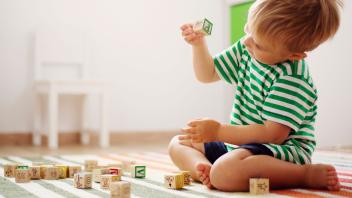The diagnostic features of autism spectrum disorder (ASD) can be easy to miss in young children. Looking for possible red flags or early signs may help to find children at risk for ASD, and in need of a diagnostic evaluation. If your child shows some of the following red flags, talk to your child’s doctor. If you or your child’s doctor has concerns about possible ASD, ask for a referral to a developmental specialist or you can contact your local early intervention program.
Red flags of autism in toddlers
Social communication
- Limited use of gestures such as giving, showing, waving, clapping, pointing, or nodding their head
- Delayed speech or no social babbling/chatting
- Makes odd sounds or has an unusual tone of voice
- Difficulty using eye contact, gestures, and sounds or words all at the same time
- Little or no pretending or imitating of other people
- Stopped using words that they used to say
- Uses another person’s hand as a tool (e.g., putting parent’s hand on a jar for them to open the lid)
Social interaction
- Does not look right at people or hard to get them to look at you
- Does not share warm, joyful expressions
- Does not respond when someone calls their name
- Does not draw your attention to things or show you things they’re interested in
- Does not share enjoyment or interests with others
Repetitive behaviors and restricted interests
- Unusual ways of moving their hands, fingers, or whole body
- Develops rituals such as lining objects up or repeating things over and over
- Very focused on or attached to unusual kinds of objects such as strips of cloth, wooden spoons, rocks, vents, or doorstops
- Excessive interest in particular objects, actions, or activities that interferes with social interaction
- Unusual sensory interests such as sniffing objects or looking out of the corner of their eye
- Over- or under-reaction to certain sounds, textures, or other sensory input
- Very focused on or attached to unusual kinds of objects such as strips of cloth, wooden spoons, rocks, vents, or doorstops
- Excessive interest in particular objects, actions, or activities that interferes with social interaction
Citation
Copyright © Florida State University. All rights reserved. www.AutismNavigator.com
Reprints
For any reprint requests, please contact the author or publisher listed.
